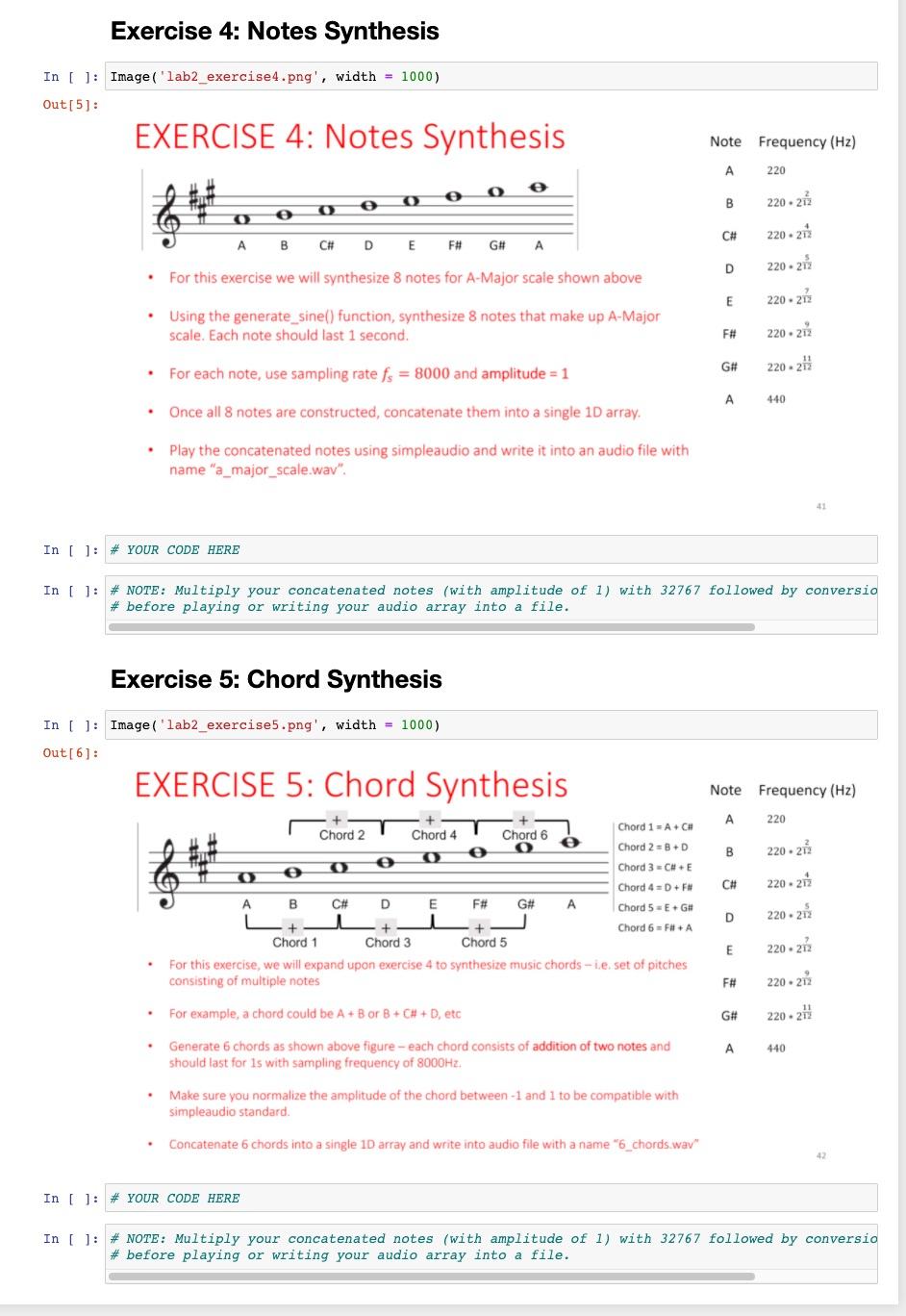Answered step by step
Verified Expert Solution
Question
1 Approved Answer
Exercise 4: Notes Synthesis In [ ]: Image ( 'lab2_exercise4.png', width = 1000) Out[5]: EXERCISE 4: Notes Synthesis Note Frequency (Hz) 220 o 0 O

Step by Step Solution
There are 3 Steps involved in it
Step: 1

Get Instant Access to Expert-Tailored Solutions
See step-by-step solutions with expert insights and AI powered tools for academic success
Step: 2

Step: 3

Ace Your Homework with AI
Get the answers you need in no time with our AI-driven, step-by-step assistance
Get Started


